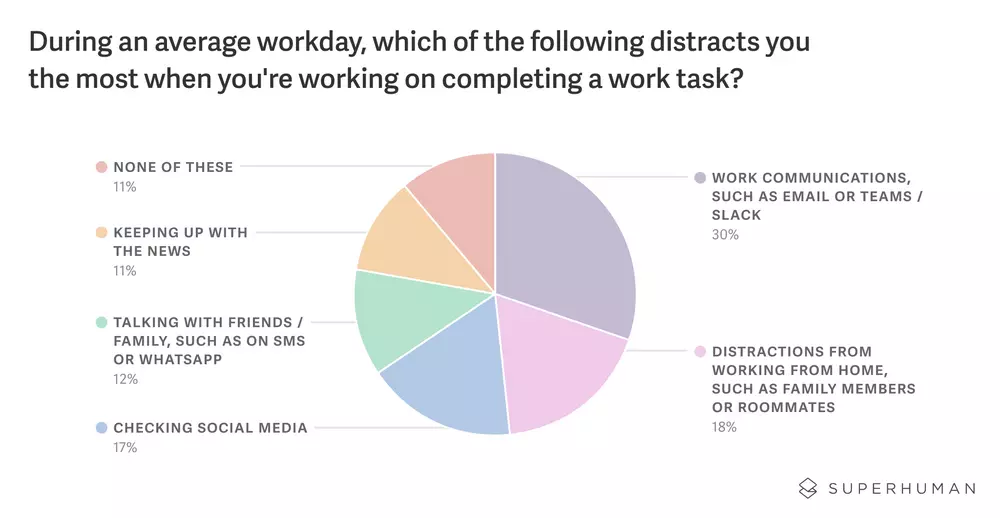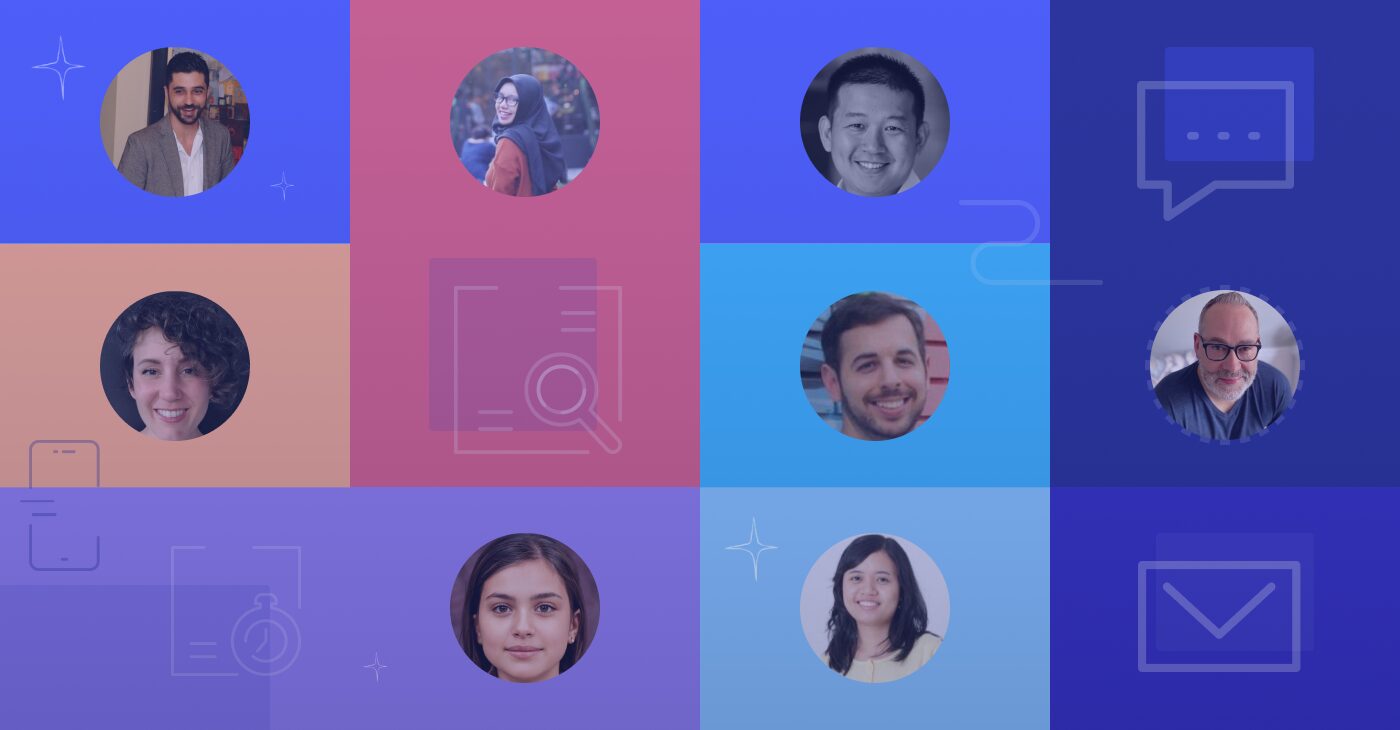5 Proven Tips to Spend Less Time on Emails and Reclaim Your Productivity
August 18, 2022 8 min read

Do you spend too much time on emails?
With billions of emails sent every day, it’s unsurprising that so many of us feel as though reading and responding to emails makes us stressed and unproductive.

Sure, emails are a diverse and integral part of our day-to-day communications. They support us in everything from customer service to internal collaborations. However, there’s no denying that on the whole, emails are a reactionary task that can sometimes distract us from high-priority tasks.
For marketers, email marketing automation software has made handling emails much more time-efficient. But how can we spend less time on emails that involve communicating with customers, clients, and colleagues?
Let’s explore five actionable tips to help you become more productive with emails.
1. Set Email-Checking Boundaries
If you’re the kind of person who is always getting distracted by your emails, you’re not alone. A recent survey discovered that for 30% of remote workers, receiving work emails disrupted their workflow more than checking social media and home distractions.

It’s easy to become blinded to the amount of time you waste on email. Try setting some boundaries and exercising self-discipline using the tips below.
Turn Off Your Notifications
How many times have you stopped what you’re doing just to reply to an email that didn’t require an immediate response?
Emails are reactionary. As soon as we hear that “ding,” we lose our train of thought. Turning off notifications prevents us from getting distracted.
“But,” I can hear you asking, “what happens if I miss an important email?” Well –
Check Your Inbox in Intervals
Get rid of the idea that you have to be always and immediately available via email. According to Adobe, only 59% of work emails are actually useful. Other research reports that only 41% of your coworkers expect you to email back within the hour – the other 59% are happy to wait!
Consider creating a workflow diagram (feel free to use a workflow template) to document your workflows. This can help you pinpoint times that are most suitable for email-checking. Avoid scheduling email checks during high-priority processes and try to only break from your schedule if you receive urgent emails (which, of course, you should reply to straight away).
A good rule of thumb is to schedule in email checks three times a day: once in the morning, once before/after lunch, and once near the end of the day.
Don’t Reply to Every Single Email
Seriously, not every email requires a response. Unsolicited pitches, CC’d emails, one-word responses – if it’s not important, archive or bin the email. Remember, the more emails you send, the more you’ll receive.
2. Create Templates
There are some emails that we find ourselves composing over and over again. Instead of composing these emails from scratch every single time, why not create email templates?
Businesses use templates as a copywriting tool all the time. For coworker emails, you can simply type up one of your general responses and save it to your templates.
For example, here’s a template you might use to handle coworker requests:
Hello [Name],
Thanks for the email. No problem – I’ll aim to get it over to you by [time/date].
Please let me know if this is urgent and I’ll try to send it over sooner.
Kind regards,
[Your Name]
Remember to name and categorize your templates wisely, and update/delete them as needed. Searching through a disorganized templates folder can become as time-consuming as writing messages from scratch.
Creating email marketing templates is also a huge time-saver. According to a recent Litmus report, email design is one of the most time-consuming tasks of email marketing.

There are plenty of free email templates available that you can use to reduce the time you spend creating newsletters, promos, and more. The best email builder tools make their email templates fully customizable, enhancing brand consistency while decreasing email production time.
3. Keep Emails Short
Emails aren’t the place for flowery, elaborate descriptions. Wordy blocks of text are not easily readable and lend themselves to miscommunication. Chances are, you’ll end up in a laborious back-and-forth.
Keep your emails clear and concise, with straightforward instructions as to what you want them to do next. This reduces the likelihood of them emailing back for clarification. With that being said, personalizing your emails is still important, so don’t forget to be friendly and polite.
4. Reduce Inbox Clutter
“Inbox blindness” isn’t just a phenomenon that affects consumers. If you’re used to receiving a lot of irrelevant work emails – especially if you leave them unread and uncategorized – you’re more likely to accidentally overlook your important emails.
On the same note, finding the email you need becomes more frustrating as your inbox volume grows. You have to search for emails individually, sometimes delving into the depths of your inbox just to find what you’re looking for.
According to research by Mail Manager, 73% of people think they spend too much time trying to locate specific emails. 56% of people find locating emails frustrating, and 70% believe it to be one of the biggest drainers of productivity.

To mitigate stressful unproductivity, try following some of these inbox organization and hygiene best practices.
Create Folders
You can create folders (or labels if you’re using Gmail) to categorize your mail. Identify your main and sub-categories and sort your emails into the most appropriate folder.
Use Filters
Email filters automatically manage incoming emails based on predetermined rules. You might choose to move emails from certain addresses to your archive, or an email containing certain keywords to a particular folder.
You can think of email filters as an if-then configuration. For example:
- If you receive an email from clients-email@gmail.com with the subject line “question,” then send the email to my client folder + star
- If you receive an email from my-friends-email@outlook.com, then send the email to my “personal” folder
- If you receive an email from nuisance-email@gmail.com, then send the email straight to my bin
Move Read Messages Out of Your Inbox
Not all of your inbound emails will meet the criteria for filtering. Make it a habit to move irrelevant or uncategorizable read messages out of your inbox and into your archive or binned folder. No more re-reading messages just to remember whether they were important or not.
Unsubscribe From Unnecessary Lists
How many unread marketing emails and newsletters do you have in your inbox?
So many of us subscribe to a blog only to never open an email from them. And sure, it’s not like we’re spending time replying to their newsletters, but we do spend time shifting through wads of emails. Plus, if you’re one of the 52% of people who admit to checking their personal emails at work every few hours, it’s very easy to get distracted when emails with the subject “30% off your next summer holiday” pop up in your inbox!

Be ruthless and unsubscribe from emails you don’t engage with. For email lists that are irrelevant to your work (but you still love them), use filters to send them straight to a different folder. You could even consider creating a different out-of-work email address.
5. Promote Alternative Contact Methods
Look, there’s a reason why so many businesses are transforming their call centers into cloud contact centers. One contact method just isn’t enough anymore. Erm, what is a cloud contact center, you ask? It’s a comprehensive suite of tools that enable businesses to communicate seamlessly with customers across multiple different channels including phone calls using a business phone system, email, instant messaging, SMS, and more.
Email is a powerful communication tool, but it definitely has drawbacks. The biggest one is that explaining detailed instructions or intricate concepts just doesn’t work as effectively. You end up confusing your recipient and getting sucked into drawn-out email conversations.
If an email requires a lengthy response, switch to another form of communication. This may require you to improve your omnichannel customer service capabilities so that customers can contact you across different channels without needing to repeat themselves.
Phone calls and video chats are excellent for communicating elaborate ideas. On the flip side, live online chat or social media messaging is better for quick fixes. According to research by Commbox, customers prefer to use chatbots, Facebook, Whatsapp, and SMS over email.

Promoting alternative contact methods is something that you should be doing consistently across channels in order to maintain optimal volumes. For example, putting your contact number in your email signature can encourage a customer to give you a call instead.
Similarly, if people are bombarding your business phone with FAQs like shipping or return policy inquiries, you can use IVR software to direct them to your website’s FAQs instead. (What is IVR? It’s an automated phone system technology that routes calls based on a set of predetermined rules – a bit like your email filter).
Basically, the more contact methods you have, the less time you spend dealing with emails.
Conclusion
Responding to emails might be a vital part of your workday, but it can lead to procrastination if you don’t set boundaries. Combine this with a cluttered inbox, and you might find yourself overwhelmed and unproductive.
However, once you’ve got a routine in place (and broken some of those pesky bad habits), managing your emails becomes part of your productivity. By using some of the above methods, like keeping emails short, using templates, cleaning out your inbox, and utilizing alternative channels, you can spend less time on emails and more time doing the work you love.
Author Bio

Richard Conn is the Senior Director for Demand Generation at 8×8, a leading communication platform with an integrated contact center, voice, video, and chat functionality. It’s also the provider of the best cloud phone systems for small businesses. Richard is an analytical & results-driven digital marketing leader with a track record of achieving major ROI improvements in fast-paced, competitive B2B environments. Richard Conn also published articles for domains such as ZoomShift and Upside. Check out his LinkedIn.



